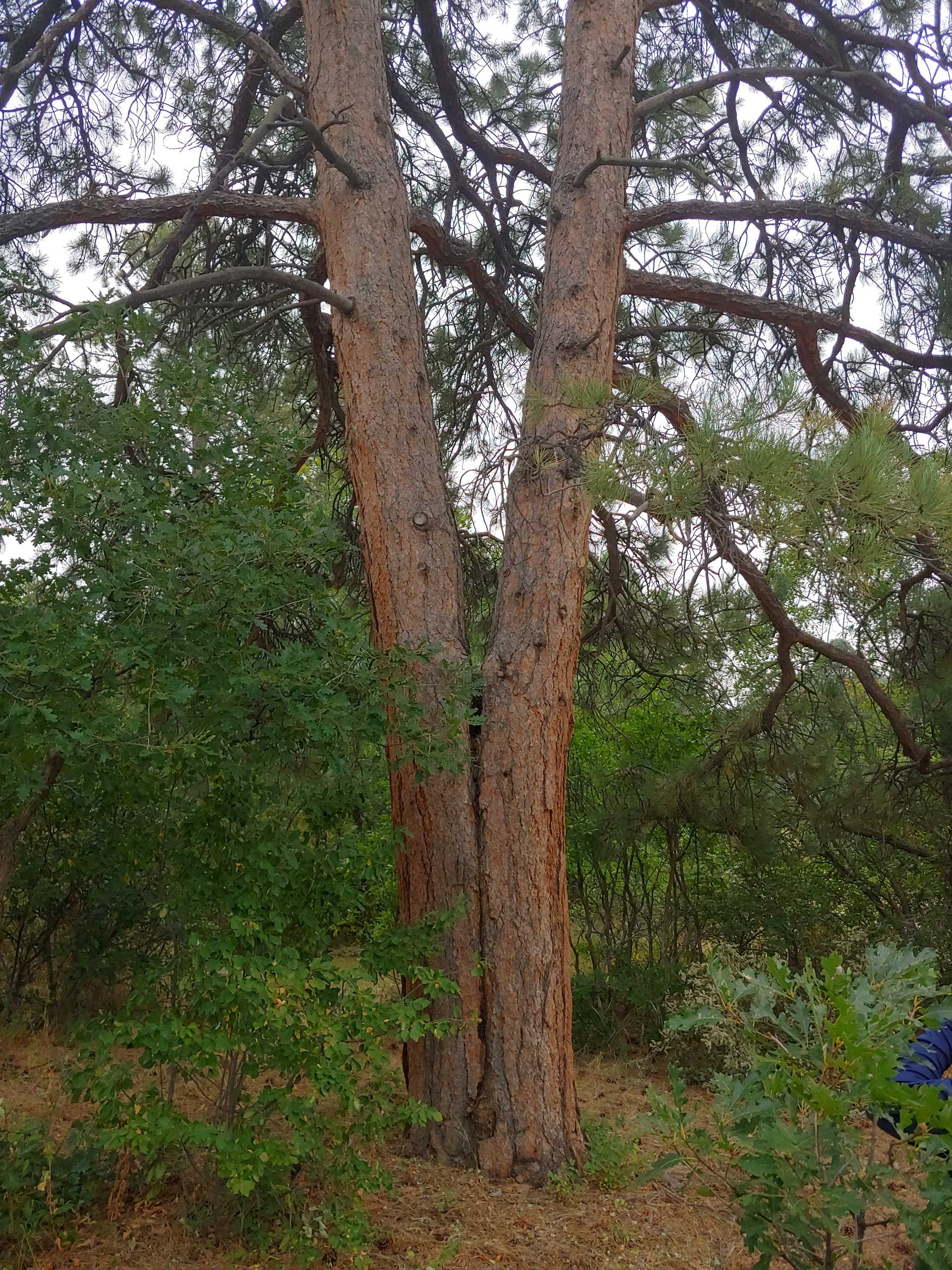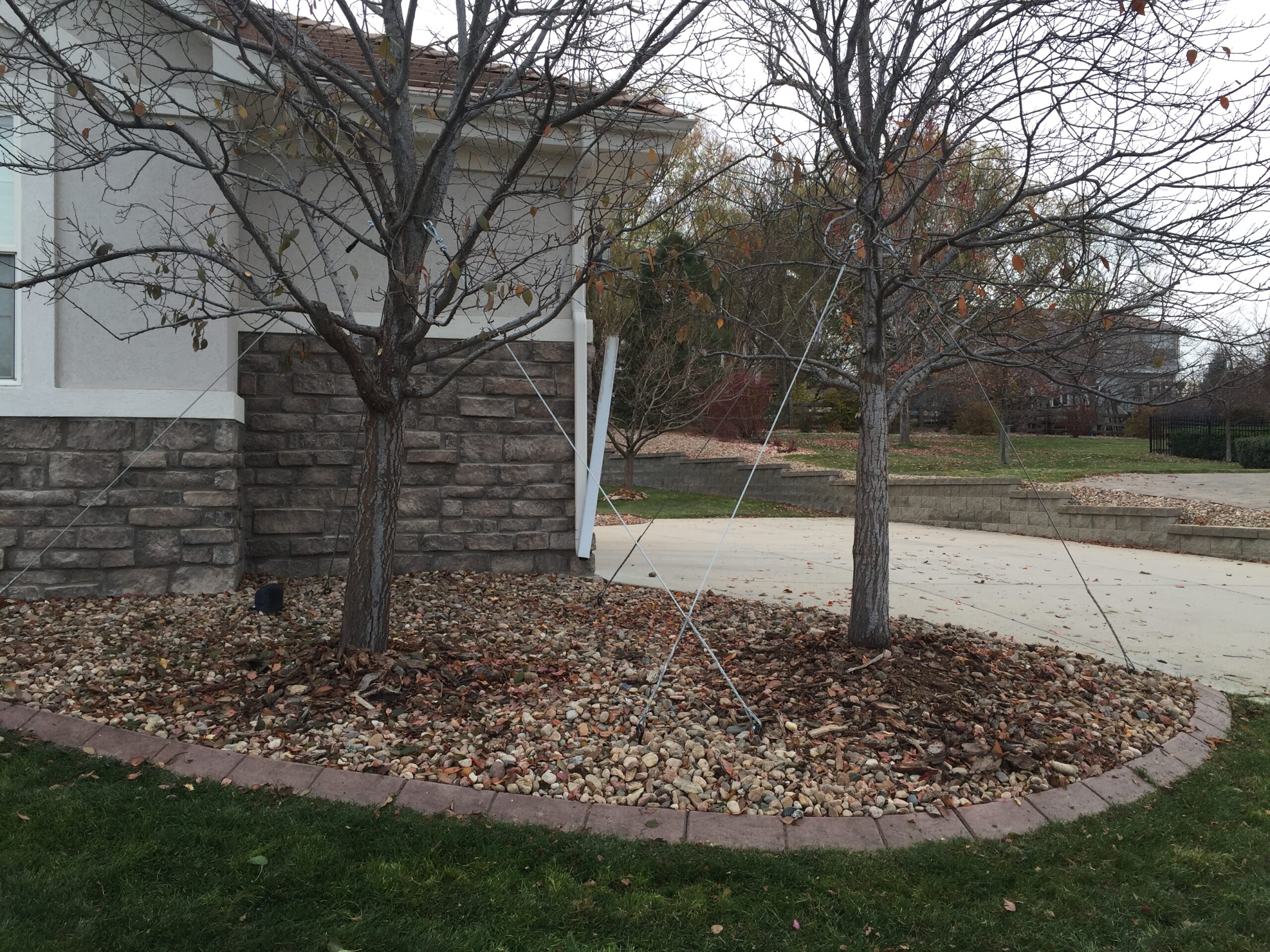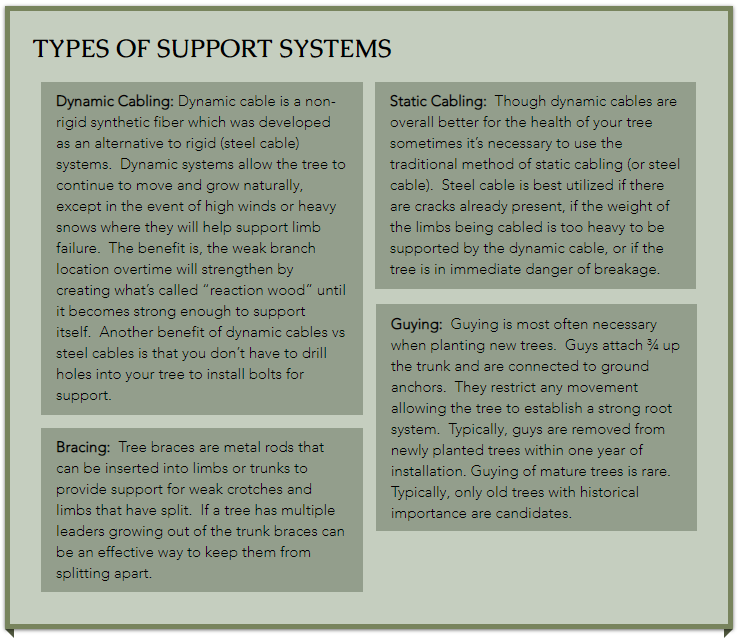Tree Support Systems


In Colorado there are lots of old mature trees that might be posing potential hazards. As trees age they can develop decay, stress cracks from heavy unpruned ends, and weak crotches from poor structure. It’s common for homeowners to consider removing these old trees once they become aware of the problem. However, removal is not always the answer. In some cases, cables, or braces can be installed to reduce the hazards and you can still enjoy your beautiful tree while having the peace of mind that it’s not going to break and cause any damage to your property, neighboring properties, or to people.

